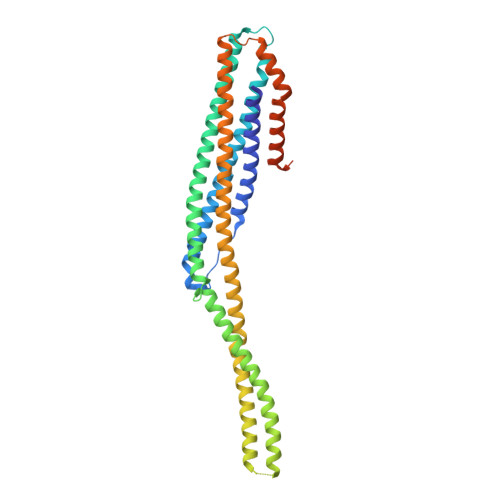Identification and structural analysis of the tripartite alpha-pore forming toxin of Aeromonas hydrophila.
Wilson, J.S., Churchill-Angus, A.M., Davies, S.P., Sedelnikova, S.E., Tzokov, S.B., Rafferty, J.B., Bullough, P.A., Bisson, C., Baker, P.J.(2019) Nat Commun 10: 2900-2900
- PubMed: 31263098
- DOI: https://doi.org/10.1038/s41467-019-10777-x
- Primary Citation of Related Structures:
6GRJ, 6GRK, 6H2D, 6H2E, 6H2F, 6R1J - PubMed Abstract:
The alpha helical CytolysinA family of pore forming toxins (α-PFT) contains single, two, and three component members. Structures of the single component Eschericia coli ClyA and the two component Yersinia enterolytica YaxAB show both undergo conformational changes from soluble to pore forms, and oligomerization to produce the active pore. Here we identify tripartite α-PFTs in pathogenic Gram negative bacteria, including Aeromonas hydrophila (AhlABC). We show that the AhlABC toxin requires all three components for maximal cell lysis. We present structures of pore components which describe a bi-fold hinge mechanism for soluble to pore transition in AhlB and a contrasting tetrameric assembly employed by soluble AhlC to hide their hydrophobic membrane associated residues. We propose a model of pore assembly where the AhlC tetramer dissociates, binds a single membrane leaflet, recruits AhlB promoting soluble to pore transition, prior to AhlA binding to form the active hydrophilic lined pore.
Organizational Affiliation:
Department of Molecular Biology and Biotechnology, University of Sheffield, Firth Court, Western Bank, Sheffield, South Yorkshire, S10 2TN, UK.















